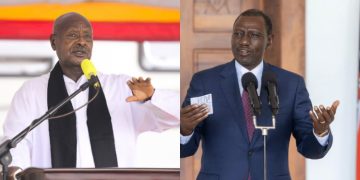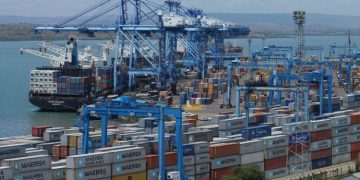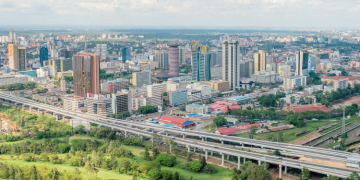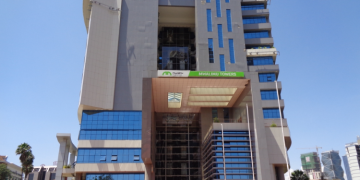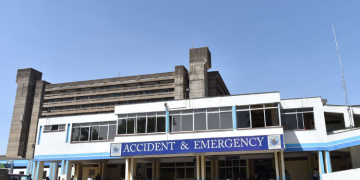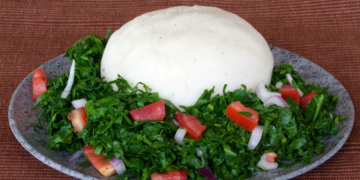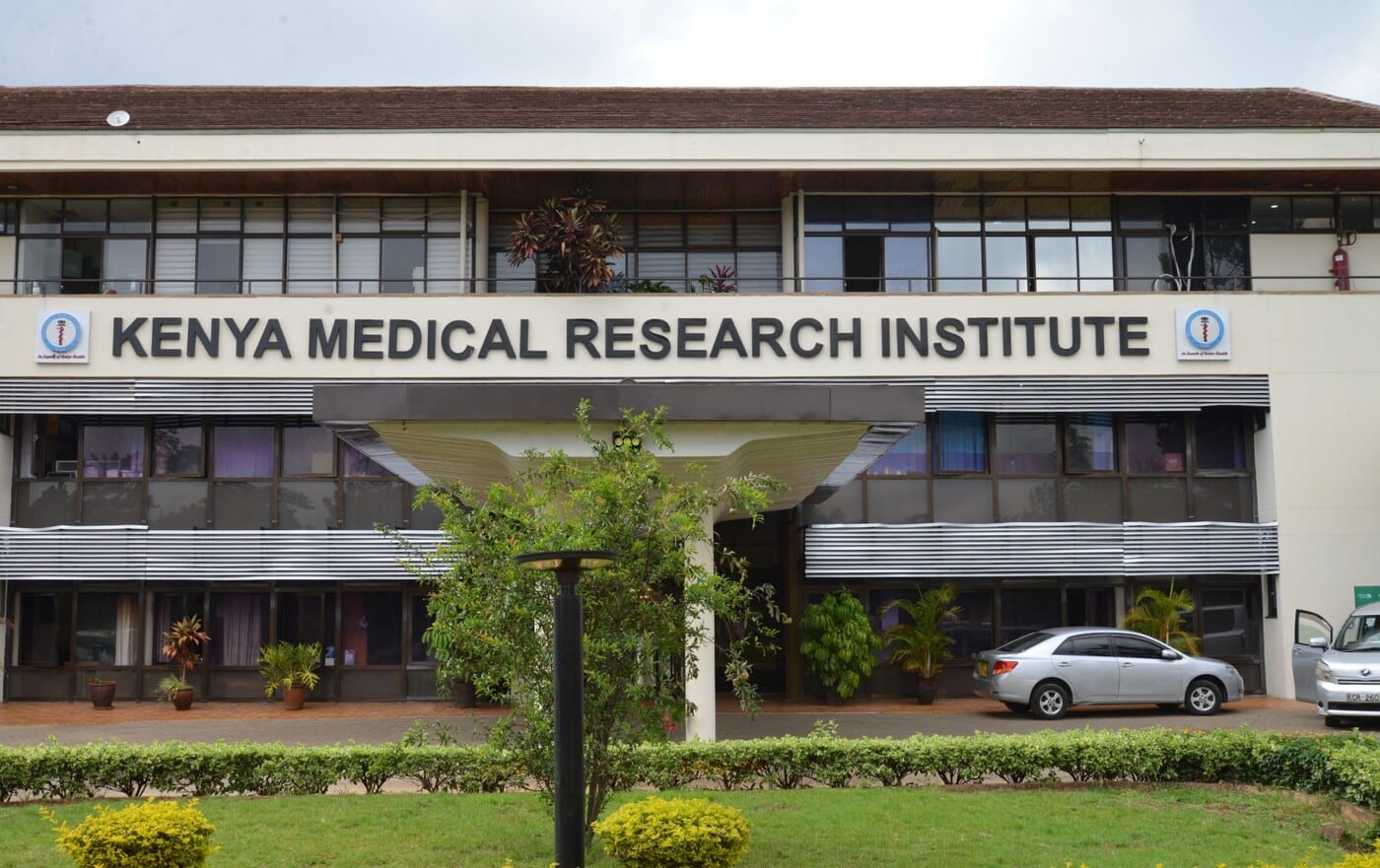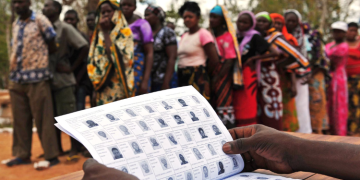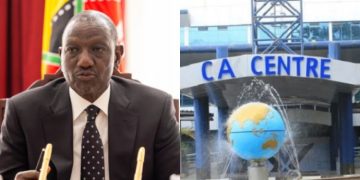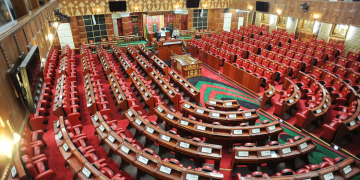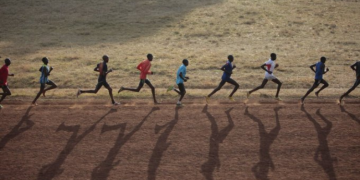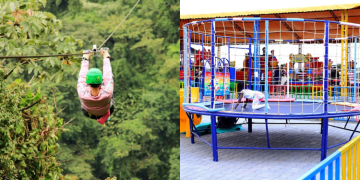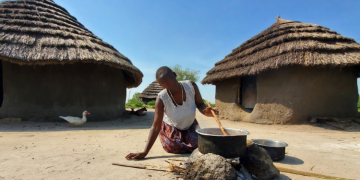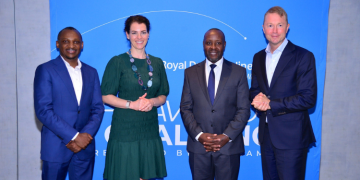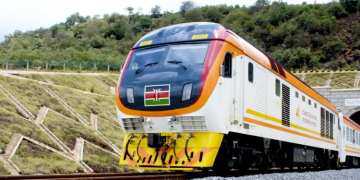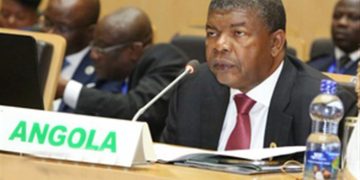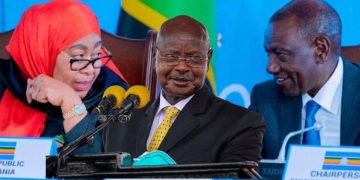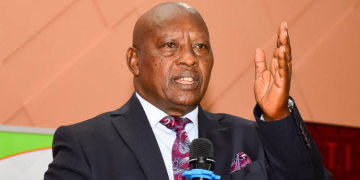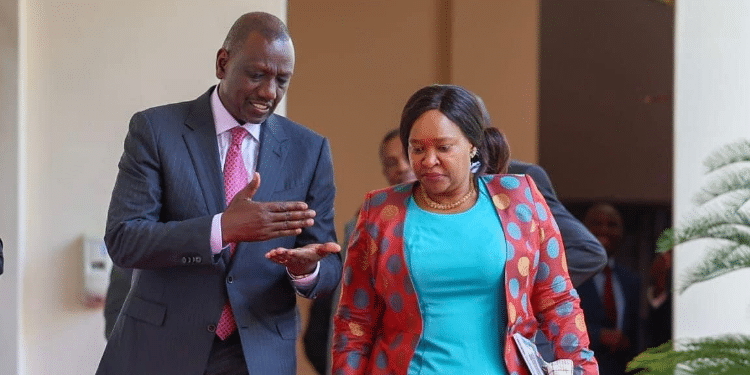Magical Kenya’s tourism assets range from sand and sun and blue economy marine park and water games at the coast, game parks and game parks abounding with diverse flora and fauna for Safaris, Masai Mara Wildebeest Great Migration ‘Eighth Wonder of the World’, mountaineering, eco-tourism, cultural tourism, soft power education and health tourism, Meetings, Incentives, Conferences, and Exhibitions (MICE).The sector contributes immensely to anchoring USD KES exchange rate by buffering CBK FX reserves as well as by creating jobs and wealth. Key stakeholders include airlines, cruise ships, hoteliers, tour operators, communities, MICE managers, tourism Semi-Autonomous Government Agencies (SAGAs including Tourism Fund (TF), Kenya Tourism Board (KTB), Kenya Utalii College (KUC), Kenyatta International Convention Centre (KICC), Tourism Research Institute (TRI), Tourism Promotion Fund, and Tourism Regulatory Authority (TRA).
Vision 2030 specified Kenya’s tourism target as, ‘to be among the top 10 long haul tourist destinations in the world offering high end, diverse and distinctive visitor experience that few of her competitors can offer’. Between 2006 and 2012, the country’s tourism goals comprised reaching KES 200bn of revenues, 3 million visitors from 1.6million, raising average spend per tourist to above KES 70,000 from KES 40,000 and increasing hotel beds from 40,000 to 65,000. Kenya’s average spend per international visitor at USD$871 in 2029 lagged behind Bahamas at USD$2, 083, was USD$1000 less than Tanzania’s USD$1,844, Seychelles USD$1,725, Mauritius USD$1,291, Egypt’s USD$1,087, Ethiopia’s USD$1,056 but ahead of South Africa’s USD$816, Uganda’s USD$662, Rwanda’s USD$458 and Tunisia’s USD$190.
Tourism flagship projects included three resort cities (north coast, south coast, Isiolo), marketing little visited game, Maasai Mara and Nakuru premium customer experience parks, 3,000 beds in Western Kenya for high cost cultural and ecotourism beds, certify 1,000 cultural tourism home stay sites and attracting five business Meetings, Incentives, Conferences, and Exhibitions (MICE) high end international hotels to Nairobi, Mombasa, Kisumu and Isiolo. Over 71 percent of global travelers are estimated to plan sustainable eco-friendly travel and tourism choice of energy saving modes of transport, hotel design, food origins and traceability.
Also Read: Kenya Beats Thailand to Win Global Tourism Seat
Kenya’s Ministry of Tourism and Wildlife 2023-2027 strategic plan with an implementation budget of KES11.64bn (internal KES4.54bn and external deficit financing of KES 7.1bn) targets to double tourism direct GDP contribution to 8% (Increase earnings from KES 352.54bn to KES 824bn) and more than double tourist arrivals from 2 million to 5 million. Initiatives include raising tourism quality standards, diversification of products to a year-round destination beyond Safaris in summer and sun and sand beaches in winter, diversify source markets, promoting Kenya, sustainable equitable sharing of tourism benefits, involve youths in tourism and conservation, operationalize Ronald Ngala Utalii College, develop Tourism Repository Portal) and Unified Communications Contact Center.
Robust Post Covid19 Pandemic Recovery
Tourism research Institute reported Kenya’s international tourist arrivals rose by 14.6 percent from 2,089,259 in 2023 to 2,394,376 in 2024.Tourism earnings inflows increased by 19.8 percent from KES 377.49bn to KES 452.2bn in 2024. Key strategic interventions included Electronic Travel Authorization (ETA), aggressive marketing, tourism product diversification, adoption of smart booking platforms, targeted digital marketing promotions, new airlines (Air Asia and Air Dubai) and Brussels Airlines relaunch. Kenya’s tourism marketing and promotion budget of USD$6 million in 2019 was dwarfed by 16.83 times by Egypt’s USD$101m, 15.83 times by Morocco’s USD$89m12.16 times by South Africa’s USD$73m, 5.7 times by Sri Lanka’s USD$34m and 3.17 times by Tunisia’s USD$19m.
Top source markets and YOY shares of total inbound tourists in 2024 included USA’s 306,501 (12.8 percent), Uganda’s 225,559 (9.4 percent), Tanzania’s 203,290 (8.4 percent), UK’s 180,639 (7.5 percent) and India’s 131, 570 (5.5 percent). Africa dominated tourism arrivals into Kenya with 975,883 (40.8 percent of total) in 2024. Europe was second with 680,373 (28.1 percent of total). Americas sent 376,019 (15.7 percent of total). Asia contributed 284,277 (12.1 percent of total). Oceania had 31,615 arrivals (1.3 percent of total). Middle East contributed 19,559 visitors (0.8 percent of total but this can be increased by targeting middle- and upper-class Ramadhan whole family holidays).
Top Tourism Benchmarking Countries and Cities Globally and in Africa
UN World Tourism Organization (UNWTO) estimates the world recovered to match 2019 Covid19 Pandemic Global Lockdown’s 1.5 billion international tourists in 2024. Tourism export revenues (international tourism receipts plus passenger transport fares) surpassed pre-Covid19 USD$1.7 trillion in 2019 in 2023 (USD$1.8 trillion) before rising to USD$2 trillion in 2024. Tourism direct GDP fully recovered from Covid19 in 2023 after matching 2019’s USD$3.4 trillion. China had the highest number of international tourists with 149.7m in 2019 with majority 149.7m hailing from East Asia and Pacific, Europe contributed 6.9m, Americas 3.6m and South Asia 1.48m.Hong Kong SAR city was ranked by Euromonitor 4th globally on international tourism trips with 20.5m having grown 19 percent YOY in 2024.Macau was eighth globally with 18m international tourism trips after growing 26 percent YOY in 2024.
Italy had 74.3m tourists in 2022 with 67.7m coming from Europe and 4.5m from Americas. Poland had 71.8 m foreign tourists in 2022 with 70.9 coming from Europe. Spain welcomed 71.7m tourists in 2022 with 62.8m visiting from Europe and 6.35m from Americas. USA polled 50.9m tourists in 2022 with 33.7m coming from Americas, 11,6m from Europe, and 3.5m from East Asia and Pacific. Turkiye’s location at the intersection of two continents led to the country attracting 50.5m tourists with 33m hailing from Europe, 4.5m from the Middle East and 2.8m from South Asia. Euromonitor reports Istanbul city had the second highest number of internal tourism arrival trips with 23m in 2024 having grown 14 percent YOY. Antalya city was ranked 7th with 19.3m internal tourism arrival trips in 2024 after a 17 percent YOY growth.
France in 2021 welcomed 48.4m tourists with 44.1 visiting from Europe. Hungary received 46.3m with 44.9m foreign tourists coming from Europe. Paris city was ranked 9th by Euromonitor on international tourism trips at 17.4m after a sluggish 2 percent YOY growth in 2024. Thailand in 2019 welcomed 39.9 tourists of which 28.5m came from East Asia and Pacific, 6.7m from Europe, 2.4m from South Asia and 1.56m from Americas. Euromonitor ranked Bangkok the top city worldwide having received the highest international tourism trips at 32m after growing 30 percent YOY in 2024.
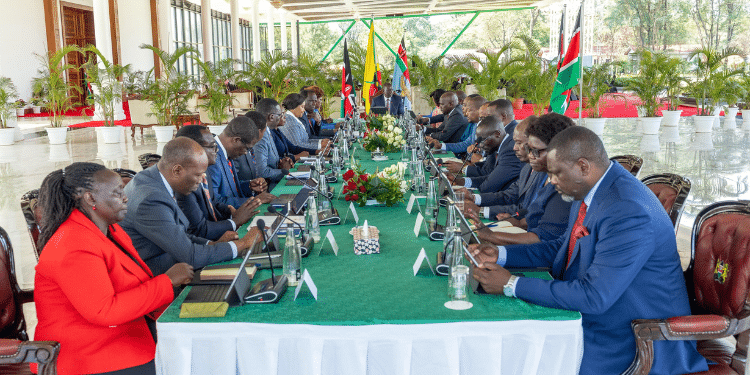
Germany hosted 28.5m tourists with 23m coming from Europe and 3m from Americas. Greece attracted 28.5m international tourists with 25.4m originating from Europe and 1.4m from Americas. In the Middle East, UAE had a well-balanced mix of 12.7m tourists with 3.5m coming from Europe, 3.9m from Middle East and 3.1m from South Asia. Dubai city clocked 8 percent YOY growth international tourism arrival trips to 18.2m to be ranked by Euromonitor 7th in 2024.
Africa received 74 million tourists which accounted for the continent’s 5.3 percent share of global arrivals which is underweight as it falls below its global population share at 17 percent and 20 percent share of the earth’s landmass. Egypt’s proximity and transport connectivity enabled the country to receive 11.72m in 2022 with 7.34m from Europe and 2.29m from Middle East. Egypt has set itself a target of 30m inbound tourists by 2031 while Saudi Arabia has set an aggressive target of 150m visitors by 2030.Morocco welcomed 10.87m international arrivals with Europe sending 4.12m. Tunisia hosted 6.4m tourists with 1.9m coming from Middle East, 1.8m from Europe and 1.36m from Africa. South Africa got 5.69m international arrivals in 2022 with majority 4.23m coming from Africa and Europe sending 0.9m.
Threats and Opportunities in Accelerating Kenya’s Tourism Promise
Kenya’s tourism stakeholders need to invest in national resilience (financial, operations, technology, organization, reputation, business model) from VUCA (Volatile, Uncertain, Complex and Ambiguous) exogenous global shocks. Global Black Swan pandemics have detrimental effects on tourism. Kenya experienced 70 percent contraction in tourism earnings from KES 296.2bn in 2019 to KES 88.5 bn in 2020 and took four years to recover to the pre-Covid19 when it reached KES 377.4bn in 2023.Travel advisories by source market governments due to terrorism or political urban social unrest deters safety conscious tourists. Geopolitical crises like Russia- Ukraine war in Europe, Middle East crises and Eastern DRC conflict depress inbound tourist arrivals as global supply chain disruptions causes hikes in inflation, interest rates, FX depreciation, job losses and high cost of living in source markets.
Also Read: Win for Kenya as Maasai Mara National Reserve Enters World Book of Records
Geographical proximity and intra-continent tourism are key. Egypt and Tunisia benefits from being close to Middle East and Europe, Turkey from being at the border of Europe and Asia, and China from East Asia and Pacific .Italy, Spain, France, Greece, Poland, Hungary, Portugal plus many other countries in Europe benefit from intra-EU tourism based on an in-built culture of adventurism especially in Summer while European pensioners travel to warm climes during Winter.
Key tourism demographic drivers of niche tourism two times growth of traditional tourism includes rise of millennials to 40-50 percent of international tourists with over 77 percent preference for live experiences be it be parties, concerts, festivals, performing arts, or sports and accommodation in AirBnB and private housing. Ageing population with rise of pensioners over 60+ years to 21 percent of world’s population, Rise of single women to 11 percent of global travelers. Increase of digital nomadism location independent workers to five percent of citizens across USA and Europe.
High GNI per capita, Atlas method (current US$) indicates high tourists purchasing power by residents. In 2024, North America stood at USD$80, 391, Europe Areas grossed USD$44,549, East Asia and Pacific USD$13,726 while Sub-Sahara Africa underwhelms at USD$ 1, 513.USA. High disposable and discretionary spending households are increasingly demanding unique curated and authentic tourism experiences like health/wellness, cruise trips, and exotic destination weddings in game parks, ocean beaches and foreign cities. FX strength of USD and Euro against KES means every unit can buy more goods and services in Kenya thereby incentivizing inbound American, European and other hard currency laden global tourists.
USA, Germany, China (especially during Chinese holidays in February and October, partnering with trendy travel luxury travel agencies, increase Kenya Airways flights to more Chinese cities, pervasive Confucius Institutes Mandarin language training), and Britain comprise about 33 percent of worldwide outbound tourists. Quantity and quality of intra country and intra continent intensity and density of transport connectivity of inbound airlines and flights, average time spent per flight, luxury cruise ships, railway lines and roads are paramount. Deliberate investments in key cities attractiveness and global competitiveness are important as exemplified by Paris, Athens, Milan, Rome, Bangkok, Hong Kong, Dubai and Cairo.
The global economic center of gravity is expected to tilt to Asia by 2040 driven by high populations and associated combined GDP growth of China, India, Japan and Indonesia to comprise over 40 percent of world’s GDP. This requires conscious marketing promotion to the middle- and upper-income classes of these four countries and the larger East Asia and Pacific regions. Integrating Kenya’s Mpesa, bank owned payment platforms and PesaLink to dominant social media and merchant payments systems like China’s Alibaba’s Alipay and WeChat, Japan’s Line and Rakuten, Indonesia’s Gojek-Tokopedia and India’s Paytm and PhonePe as well CBK FX reserve and financial services providers accounts in CNY, JPY, INR and Indonesia Rupee can give the country an edge. The 4th industrial revolution technologies are disrupting the tourism industry value chain be in travel bookings, distribution, ease of intra city experience and digital loyalty mobile apps. Almost 75 percent of global travelers plan their trips and vacations by leveraging the internet, online photos, testimonials and mobiles.
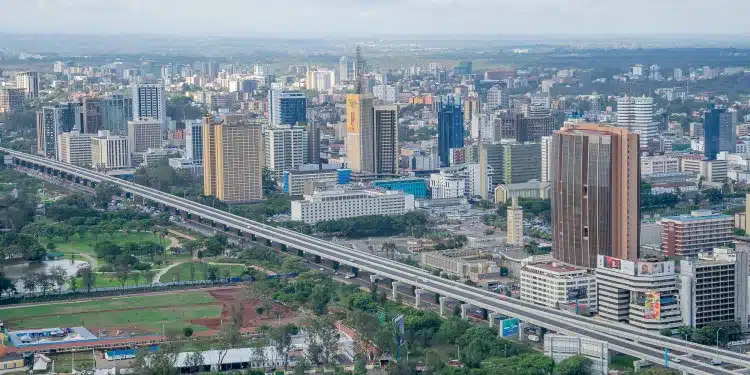
Attracting international high end tourist investments in hotels, MICE tourism and resort cities in Isiolo, South Coast and North Coast requires concerted efforts to improve the ease of doing business. Lower effective taxation and make fiscal policy to be predictable and stable over medium to long term. Pay government pending bills to tourism sector and rest of the private sector. Cooperate with FATF and Eastern and Southern Africa Anti-Money Laundering Group-ESAAMLG to remove the country from the infamous wash-wash dirty money Grey List. Build a credible fiscal consolidation path that can be trusted by local and foreign investors as well as Moody’s to upgrade the country’s Caa1 junk status sovereign credit rating.
Follow our WhatsApp Channel and X Account for real-time news updates.

